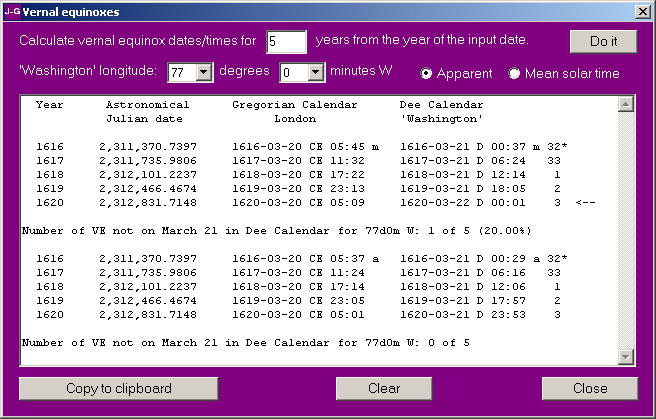Calendar Converter Bc To Ad Calculator
Julian calendar was introduced by Julius Caesar in 46 BC. It's believed that it was created by Egyptian astronomers (Alexandrian astronomers headed by Sozigen) although named after Julius.
It acquired it's final form in 8 AD.
The year started from the 1st of January because in that day the elected consuls entered the post and then there was 12 months, 365 or sometimes 366 days.
And that 'sometimes' differentiate it from the Gregorian calendar.
Actually the problem is that a complete revolution around the sun - tropical year - the Earth makes for 365.24219878 days. It's the whole number in the calendar. So if the year consists of 365 days, the each year will go ahead by almost a quarter of the day.
It was made simpler in Julian calendar - each 4th year was made a 'leap year' and has 366 days. So the length of a year in Julian calendar is 365.25 days which is much closer to a real tropical year.
But not that close - now calendar lags behind for 11 minutes 14 seconds each year. It's a whole day in 128 years. This leads to the fact that some of the dates related to astronomical phenomena, such as the astronomical vernal equinox, will begin to shift to the beginning of the calendar year.
The difference between astronomical and calendar vernal equinox, recorded on March 21 became more explicit, and as Easter holiday spring equinox was tied to spring equinox, many people in Catholic Europe believed that the problem has to be dealt with.
Converting the calendar is sometimes tricky because the first day of the year 1 is not January 1st. Ancient Hebrew Calendar Converter. The above tool allows you to enter either the Gregorian calendar date (like 2015, 2016 or 2017) or the Hebrew calendar date and switch between the two.
From Bc To Ad
Finally Pope Gregory XIII reformed the calendar and made what is known as Gregorian calendar, This project was carried out by Luigi Lilio, and according to him, later we should consider leap years only those century years that can be divided by 4 without residue (1600, 2000, 2400) and other should be considered as regular. Also the deviation of 10 days that accumulated since 8 AD was eliminated and according to pope's decree from 24 February 1582, after 4th of October 1582 the 15th of October should follow.

The approximate length of a year in new calendar was 365.2425 days. The deviation was only 26 seconds and a day deviation can be accumulated for 3300 years.
And we don't need anything more precise. Or we may say it will be our descendants problems. We can make every year that could be divided by 4000 without residue a common year and the approximate year length will be 365.24225.
Catholic countries switched to a new calendar almost immediately (no arguing against the pope), protestant countries did that uneasily and the last one of them was Great Britain in 1752. And the last country adopted this calendar was orthodox Greece which adopted it in 1929.
Now Julian calendar is used only by few orthodox churches like Serbian and Russian.
Julian calendar still lagging behind Gregorian - every 100 years (if the century is not divided by 4 without residue) by 1 day or by 3 days per 400 years. This difference is 13 days by the 20th century.

The calculator below transforms date from Gregorian calendar to Julian and vice versa. It's easy to use - enter the date and it will show Julian and Gregorian calendar date.
Calendar Converter Bc To Ad Calculator Canada
Also, there was no Gregorian before 15th October 1582 so you can't tell the date before. Although it can be extrapolated into the past.